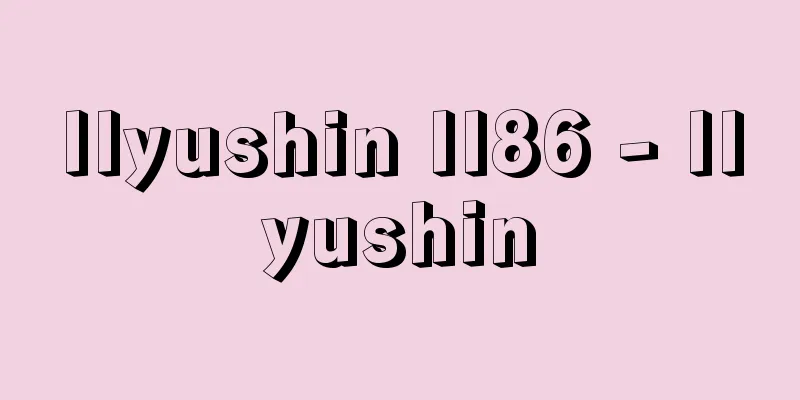Algae

|
In botany, it refers to a group of plants that belong to the algae family, but it is generally used to refer to aquatic flowering plants as well. Etymologically, it is thought to have been used mainly to refer to aquatic plants that move softly with the flow of the water and are similar to land plants. Examples include flowering plants such as eelgrass and sugamo. In contrast, the word "me" (cloth) has been used to refer to seaweed, which has a different form from land plants, such as wakame, arame, and hirome (an old name for kelp). [Moriaki Shinzaki] literatureA general term for aquatic plants. Also called moha (weed leaves) or mogusa (weed grass). Looking at examples from ancient literature, there are freshwater species such as 'kawamo' (river mo), but the vast majority are seaweeds, with 'me' meaning seaweed, and 'hama-na' (beach greens) and 'iso-no-kusa' (rocky shore grass) also being related to the seashore. 'Tamamo' and 'Itsumo' are names of beauty, while 'Okitsumo' and 'Hetsumo' are names derived from the places where the seaweed grows. Other species that use 'me' include 'wakame', 'arame', 'hirome' and 'nikime'. 'ashitsuki', 'nanoriso' (Hondawara), 'nahanori' and 'miru' (sea pine) are also species of seaweed. This usage can be seen in books such as Kakinomoto no Hitomaro's Man'yoshu, Volume 2, which read, "Even the words 'Iwami Sea, where the horns hang,' 'Among the sea stones of Kara Cape, deep-sea pines grow,' 'On the rough shore,' 'Tamamo seaweed grows,' 'Tamamo seaweed grows,' 'Tamamo seaweed grows,' 'I think of my child sleeping soundly, deep in the deep-sea pines...'" (Kakinomoto no Hitomaro). In the Kokinshu, there are examples of the use of "mo" (weed), "tamamo" (seaweed), "mokuzu" (seaweed), "float" (seaweed), "sea pine" (seaweed), "shore mustard" (green algae), and "nenunaha (waterweed)" and "junsai" (waterweed). In Koiichi, "On the waves of the tamamo that does not even come close to the shore, is my love only to be torn apart?" and Koisan, "If you do not know my unseemly body, the feet of the fisherman come walking without leaving me" (Ono no Komachi), "tamamo" and "sea pine" (often combined with "eyes to see") came to be used frequently in waka language. In Koigo, "The insects that live in the seaweed that the fisherman cuts cry at the sound of their own actions, and do not hate the world" (Fujiwara Naoko), "the insects that live in the seaweed that the fisherman cuts" came to be used to mean misfortune that one has brought upon oneself. "Moshiho" is a poetic word that has been around since the Manyoshu, but in the Tale of Genji, it appears in phrases such as "Seamen's Burning Mo," "Moshio," "Moshio-kusa," and "Mokusu," as well as a rhetorical device in which "mo" is used with "mo" (skirt), and also in phrases such as "Ukime," "Nagame," and "Umimatsume" (sea pine). Seasonal themes include "wakame," "hijiki," "mozuku," "miru," and "nori," all of which are spring. "Nano-riso" and "konbu" are summer. Some cross-seasonal themes. [Teruhiko Komachiya] [Reference] |Source: Shogakukan Encyclopedia Nipponica About Encyclopedia Nipponica Information | Legend |
|
植物学上では藻類に属する植物群をさすが、一般には水生の顕花植物などに対しても用いられる。語源的には、水の流れに身を任せて柔らかに動く、陸上植物に似た水生植物を中心として使われたものと思われる。顕花植物のアマモ、スガモなどがその例である。これに対して、陸上植物とは形態の異なる海藻には、ワカメ、アラメ、ヒロメ(コンブの古名)などのように「め」(布)の語が用いられてきた。 [新崎盛敏] 文学水草類の総称。藻葉(もは)、藻草(もぐさ)ともいう。上代文学の用例をみると、「川藻」など淡水のものもあるが、海藻類が圧倒的に多く、「め」は海藻の意であり、「浜菜」「磯(いそ)の草」なども海浜に関連する。「玉藻」「斎(い)つ藻」は美称であり、「沖つ藻」「辺(へ)つ藻」は藻のある場所からの呼称である。「め」の類には、「わかめ」「あらめ」「ひろめ」「にきめ」などがある。「あしつき」「なのりそ(ホンダワラ)」「なはのり」「みる(海松)」なども藻類である。『万葉集』巻二の「つのさはふ 石見(いはみ)の海の 言(こと)さへく 辛(から)の崎なる 海石(いくり)にそ 深海松生(ふかみるお)ふる 荒磯(ありそ)にそ 玉藻は生ふる 玉藻なす なびき寝し児(こ)を 深海松の 深めて思へど……」(柿本人麻呂(かきのもとのひとまろ))、などにその用法がうかがわれる。『古今集』には、「藻」「玉藻」「藻屑(もくず)」「浮きめ」「海松め」「磯菜」「ねぬなは(ジュンサイ)」などの用例があり、恋一「沖辺(おきへ)にも寄らぬ玉藻の波の上に乱れてのみや恋ひわたりなむ」、恋三「みるめなき我が身をうらと知らねばや離(か)れなで海人(あま)の足たゆく来る」(小野小町(おののこまち))など、「玉藻」や「海松め」(「見る目」と懸けることが多い)などは歌語として頻用されるようになった。また、恋五「海人の刈る藻に住む虫のわれからと音をこそ泣かめ世をば恨みじ」(藤原直子)により、「海人の刈る藻に住む虫」は、自分から招いた不運という意に用いられるようになった。「藻塩(もしほ)」は『万葉集』以来の歌語であるが、『源氏物語』には「海人の焚(た)く藻」「藻塩」「藻塩草」「藻屑」などがみえ、「裳(も)」に「藻」を懸ける修辞もあり、また、「浮きめ」「長め」「海松め」なども懸詞(かけことば)を伴って用いられている。季題は、「わかめ」「ひじき」「もづく」「みる」「のり」などいずれも春。「なのりそ」「こんぶ」など夏。季節のまたがるものもある。 [小町谷照彦] [参照項目] |出典 小学館 日本大百科全書(ニッポニカ)日本大百科全書(ニッポニカ)について 情報 | 凡例 |
Recommend
Täby (English spelling)
... The construction of new cities was also thriv...
Goryeoshaku - Small peacock
A ruler used in architecture during the Yamato per...
Kung Ye
[raw]? [Died] King Keimyō 2 (918) King Taebong of ...
Shinsengumi (Shinsengumi) - Shinsengumi
The Roshigumi was formed in Edo in 1862 to control...
lender of last resort
...Central banks accept current account deposits ...
Emergency Unemployment Measures Act
Law No. 89 of 1949. A law aimed at providing relie...
Torai Sanna
Year of death: 25th January 1810 (28th February 18...
Seisenkai - Seisenkai
A Chinese bureaucrat and politician in the late Q...
business finance
…To carry out its activities, a company must rais...
Pozzo, Andrea
Born: November 30, 1642 in Trento Died: August 31,...
Wako - Japanese pirates
It is a term found in Chinese and Korean document...
Hanging scroll - Kakejiku
Also called kakemono, kakeji, or kakehika. A paint...
Shimoyumita ruins - Shimoyumita ruins
A late Jomon period site in Kitsunezuka, Minamikat...
Numa (English spelling) Numa Pompilius
The second king of ancient Rome. Reigned 715?-673?...
Richthofen, Ferdinand von Wilhelm
Born: May 5, 1833, Karlsruhe [Died] October 6, 190...









